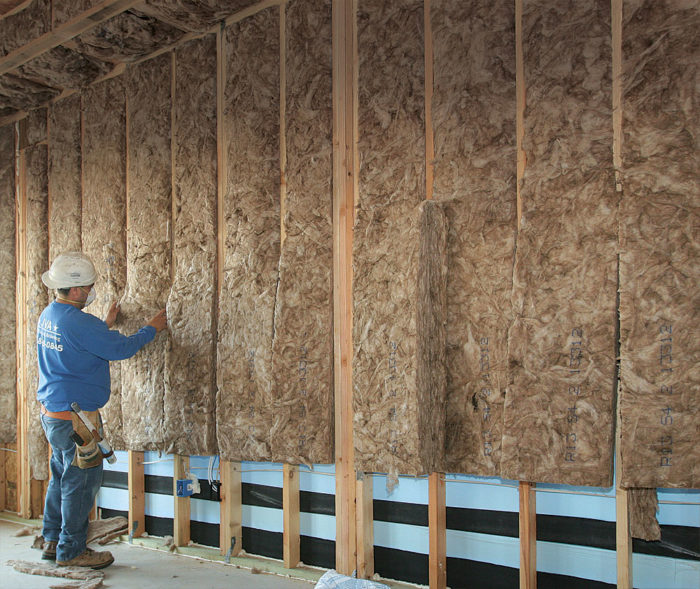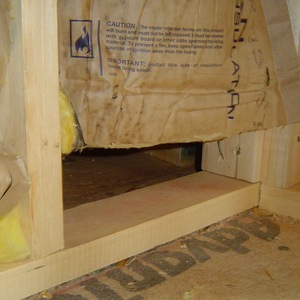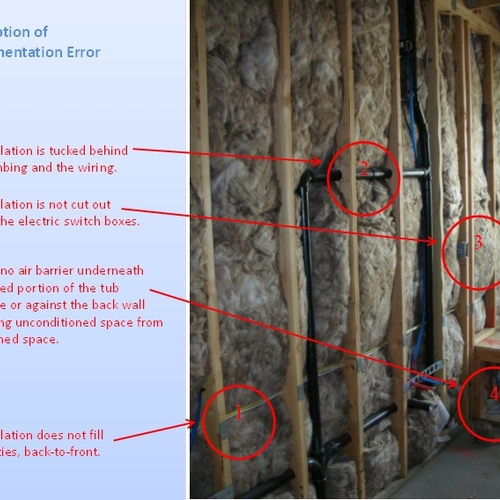
Image Credit: All photos by Patrick McCombe
When building science and home efficiency really took off in the mid-1990s, insulation contractors started hearing regularly about how the type of insulation used affects a building’s energy efficiency. Blower-door testing and thermal imaging of existing homes proved that fiberglass—as it’s typically installed—didn’t perform as well as other types of insulation, especially spray foam. As a result, builders and architects doing projects with energy-performance benchmarks started specifying spray foam as a way to ensure better airtightness and thermal resistance.
These builders and architects liked spray foam because it seals around penetrations such as pipes, ducts, and wires, and because it fills odd-shaped cavities quickly and easily. But spray foam does have a significant downside: cost. Insulating a typical new home with spray foam in my area costs two to three times what it costs to use fiberglass. Because of its low cost, fiberglass insulation is easily the most popular building insulation here in Houston and in the rest of the country. For example, fiberglass makes up 85% of my company’s insulation business, while spray foam represents only 10%. The rest is cellulose.
Provided it is installed according to the highest standards, fiberglass performs very well. My company has developed a cost-effective and quality approach you can adapt to meet the same standards.
Installed right, fiberglass works
For fiberglass to be effective, its installation must involve three factors. First, the building must have a durable and continuous air barrier such as taped sheathing. Second, any gaps and mechanical penetrations must be fully air-sealed with durable tape or sealant. Finally, the batts must be fit and placed with care and minimal compression.
When these three factors are present, fiberglass performs as well as other insulation types. And that’s not just my…
Weekly Newsletter
Get building science and energy efficiency advice, plus special offers, in your inbox.

This article is only available to GBA Prime Members
Sign up for a free trial and get instant access to this article as well as GBA’s complete library of premium articles and construction details.
Start Free TrialAlready a member? Log in















4 Comments
How does Spider blown in fiberglass compare
Hi Lee,
How does Spider blown in fiberglass compare to the installation of batts. Won't blown in always win in install quality, when done correctly of course... With Spider one would have the advantage of not having any chemicals on site and off gassing like one would have with polyurethane. Not the labor one would have with batts. And not the mess of cellulose I hear.
True or false?
But with an installation of batts one would really have to have faith in the installers...
Thanks
Response to Jan Verschuren
Jan,
I agree that Spider blown-in fiberglass insulation almost always results in a better job than fiberglass batts. For more information on this topic, see Getting to Know Spider Insulation.
Spider
Yes Martin, good write up on Spider.
Real eye opener for me. Too bad fiberglass batts have such bad reputation and dragging anything with fiberglass in the name with it. We are going all over the house now with Spider, wherever we can. Having very bad experienceS with Airkrete. Will have to write you a detailed story on this one day, when time permits.
Jan
Response to Jan Verschuren
Jan,
GBA welcomes guest blog contributions. I look forward to reading what you have to submit.
Log in or become a member to post a comment.
Sign up Log in